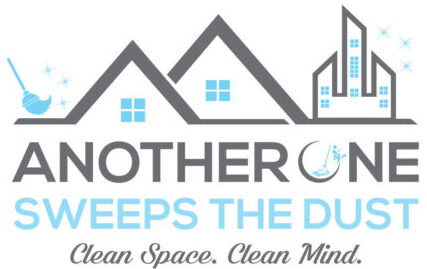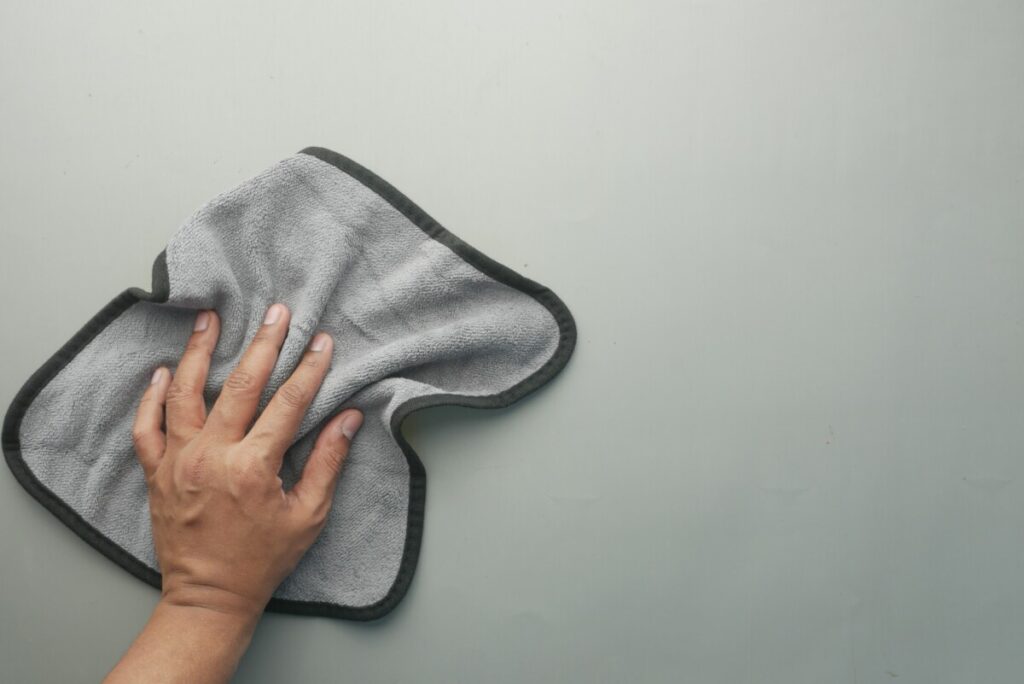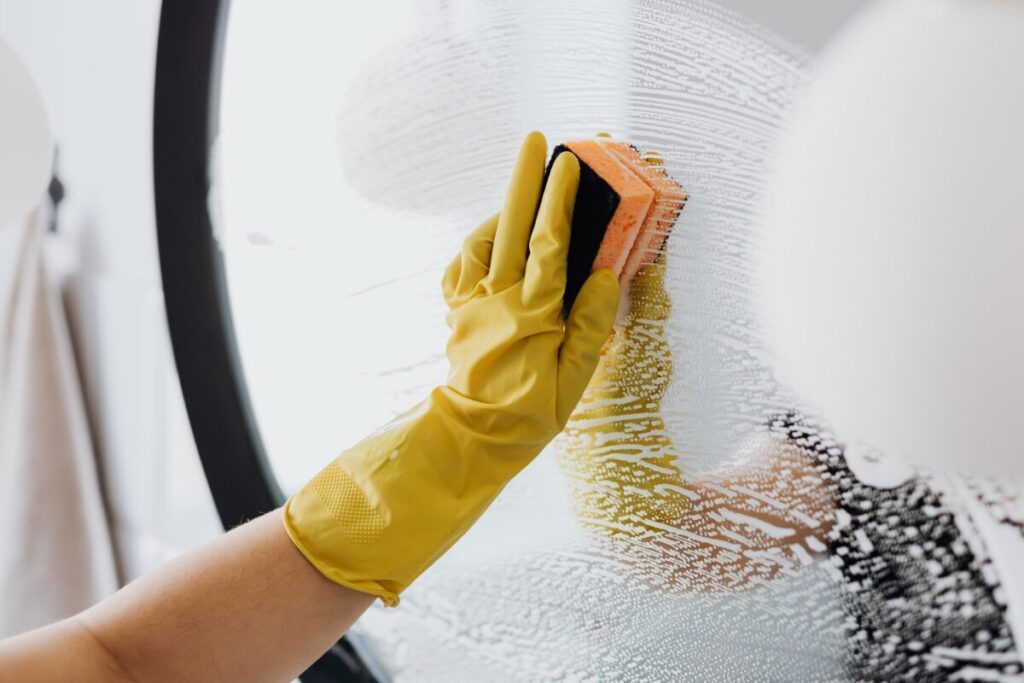How many of you have completed polishing a mirror just to find that your efforts were useless? From various perspectives, you can observe a variety of streaks that gives the mirror a smudged look. Using a few easy cleaning methods, Another One Sweeps the Dust will teach you different ways to clean mirrors without streaks.
When you clean mirrors with the wrong kind of solution, they can cause streaks. These stains might also be caused by employing incorrect washcloths and methods. The secret is by using a microfiber cloth with a flat weave, a streak-free cleanser, and a swift, steady cleaning stroke.
There are numerous various glass cleaners on the market for polishing glass mirrors, but there are a few simple ways to clean them using common home goods. Mirror and window cleaning may be done with simple substances like white vinegar and lemon juice.
How to Clean Your Mirrors Without Streaks
1. Never Use Soaps, Scents, and Dyes
Although it may be tempting to purchase fresh, floral-scented solutions, it is preferable to go with a natural product that has fewer toxins.
Because such ingredients actually leave residues that cause streaks, using a glass cleaner without soaps, fragrances, or colors produces the best outcomes. A brilliantly colored lemon-scented cleaner may seem appealing and smell fresh, but it really leaves layers of filth, oil, or wax behind. As you wanted to wipe away the pollutants, they swiftly transform into streaks.
Soaps, fragrances, and colors do not dissolve and do not wash away. This implies that if you use a colored or scented glass cleaner, you’ll be locked in an infinite cleaning cycle to remove streaks.
Glass cleaners range from basic vinegar mixtures to the most highly advanced commercial products. Whichever one you choose, be sure it’s free of unwanted ingredients that might leave stains on your glass.
2. Spot Clean! Don’t Scrub!
When cleaning your glass, certain tough-to-remove gunk may require special attention, so spot clean those tougher spots before washing the entire mirror. When removing a stain on your glass, try to avoid scrubbing or pressing hard on the surface. Scrubbing vigorously on your cooking pot is excellent, but it will scrape and ruin the surface of the glass, making it foggy and ugly.
Instead, spray the damaged areas with glass cleaner and gently wipe them down with a towel. The safety of the glass is more crucial than getting the stain off immediately away. Note that you can constantly spot clean an area, but damage to your glass’s surface is irreversible.
Utilize a commercial glass striper to remove very severe issues that a glass cleaner cannot handle, such as scale deposits caused by hard water. These solutions are intended to remove sap, tar, mineral buildup, and baked-on filth while protecting the quality and polish of your glass.
3. Choose Organic Cleaners
So, rather than soapy, scented items, what should you use? You can go for household vinegarbecause it doesn’t have any harsh ingredients that can leave scars on the glass. However, you can clean a mirror with just water. It’s not just cheaper since you wouldn’t have to buy a glass cleaner, but it’s also safer for your family and pets.
4. Use Microfiber Cloth or News Paper Only
Your glass will be clean, dry, and lint-free after using a microfiber cloth. A microfiber cloth’s tiny strands are intended to absorb or adhere to whatever they come into touch with. This means they’ll absorb the cleaning solution you’re using as well as any dirt or grime on your window. However, how you clean these microfiber cloths is critical—do not use fabric softener-containing detergents, since the softening component will remain on the cloth and leave streaks on the glass. Microfiber towels, if clean, are the greatest way to prevent thin film residue after wiping down completely of your glass or mirror.
Other folks suggest using rags or an old tee-shirt for cleaning, however, these materials were not meant for cleaning. They may function, but they are unlikely to remove residues and impurities from a surface as well as a microfiber cloth. Another common choice is paper towels. While it was created for cleaning, it is ineffective for cleaning windows since it leaves a lot of lint behind. Paper towels may also include additives such as adhesives, starches, and wetting agents, which are left behind and cause additional streaks.
It’s worth noting that some pros vouch for newspapers for cleaning glass. Although we advise using microfiber towels, a newspaper may also be used effectively. Try both and make your own decision!
5. Utilize the Side-to-Side Cleaning Pattern
Since circular movements can promote static electricity accumulation, side-to-side cleaning patterns seem best for glass. Static electricity pulls dust to your windows, which is unpleasant. Another advantage of side-to-side designs is that they are more likely to match the form of glass mirrors. This simplifies the cleaning procedure and increases the likelihood that you will be able to wash down the entire glass surface equally.
6. Redo the Cleaning Process
The techniques listed previously will guarantee that your glass and mirrors are streak-free and clear. They are not, however, a miracle medication. If you performed the procedures but are unhappy with the outcome, your glass was probably dirtier than it appeared at first. Repeat the procedure once again. Your unclean glass, mirrors, or windows must be sparkling in a trice.






